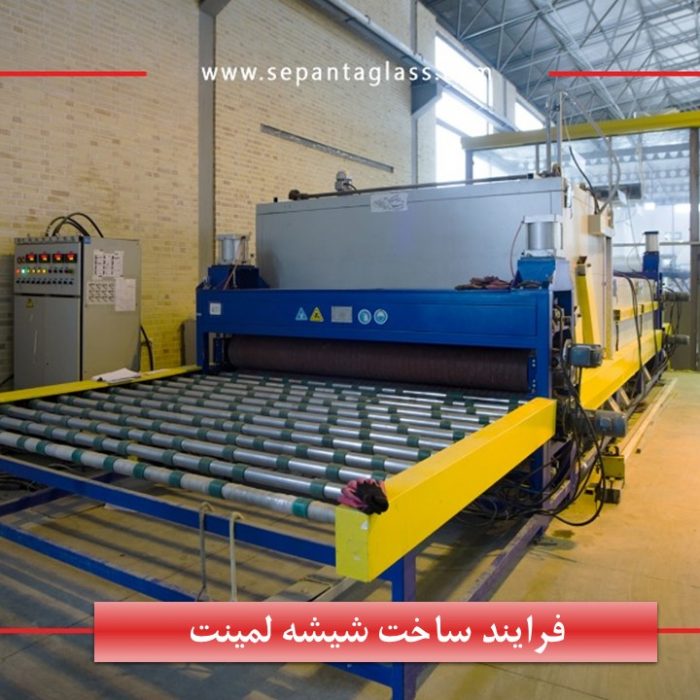Introduction to Machinery
In this section, we will introduce the machinery used in the production of laminated glass:
Sepanta Glass Laminating Furnace
The Sepanta Glass factory’s laminating furnace is a North Glass brand from China. The characteristics of this furnace are as follows:
- Production of laminated glass up to 2600*6000 mm dimensions
- Production of laminated glass up to 90 mm thickness
- The furnace’s heating system is full convection, which means that heat is not applied directly to the glass, resulting in a higher quality final product.
- Possibility of producing smart glass
- Possibility of producing curved glass
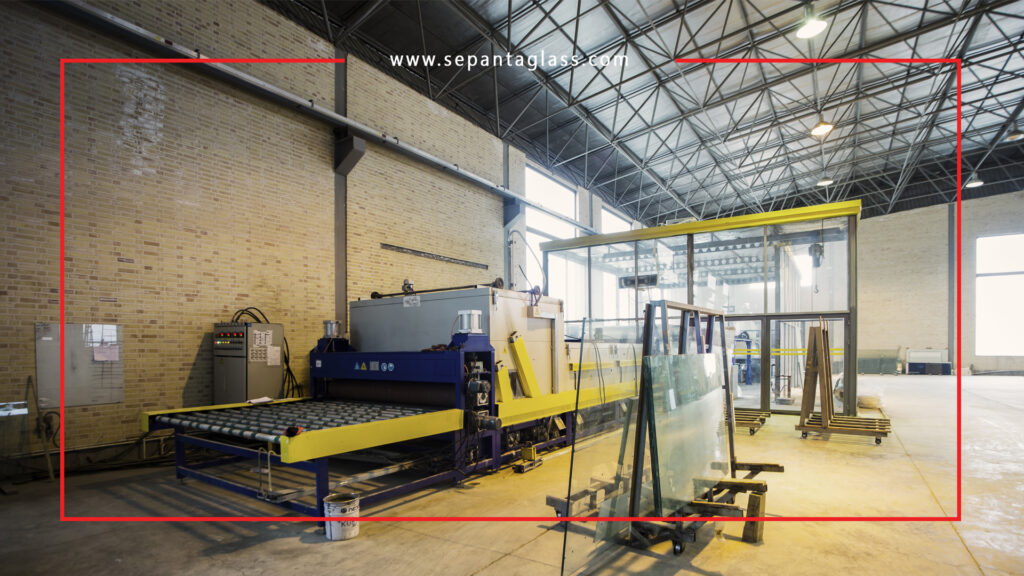
Laminating furnace
A laminating furnace is used to bond two or more layers of glass together. This furnace consists of three parts:
- Horizontal Washing Machine:Washing is of great importance in all stages of the production of building glass. For laminating, the glass must be free of any dirt, stains, dust, and moisture. The washing machine washes the glass and then dries it completely with air pressure.
Clean Room
This room is free from contamination and humidity according to the necessary standards. There should also be no openings for dust to enter.
After the washing process, the glass enters the clean room. At this stage, according to the customer’s order, the PVB film with a thickness of 0.38, 0.76, and 1.52 microns is cut to the dimensions of the glass and stretched over it. After this step, the second glass is placed on the film.
In this way, the other layers are placed on top of each other. It is very important that the glasses are completely clean before being placed on top of each other.
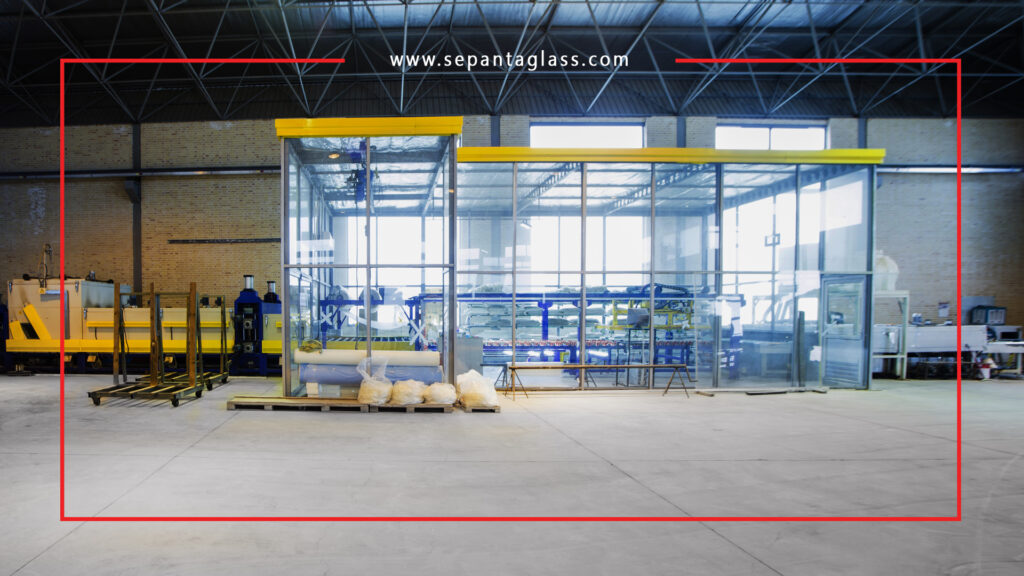
Divorce
After the desired number of glass and film layers have been placed on top of each other, the laminated glass moves on the conveyor belt towards the laminating furnace.
3. Laminating Furnace
The function of the laminating furnace is to melt the PVB film between two glasses using heat and pressure, which results in the bonding of the multiple glass layers and makes it impossible to separate them.
The speed of movement of the laminated glass is adjusted according to the specifications of the glass. The furnace also has two presses at the beginning and end, which press the glass together.
The speed of movement of the glass inside the furnace is determined based on the following specifications:
- Glass thickness
- Film thickness
- Glass type (tempered or raw)
- Number of laminated glass layers
- Laminated glass dimensions
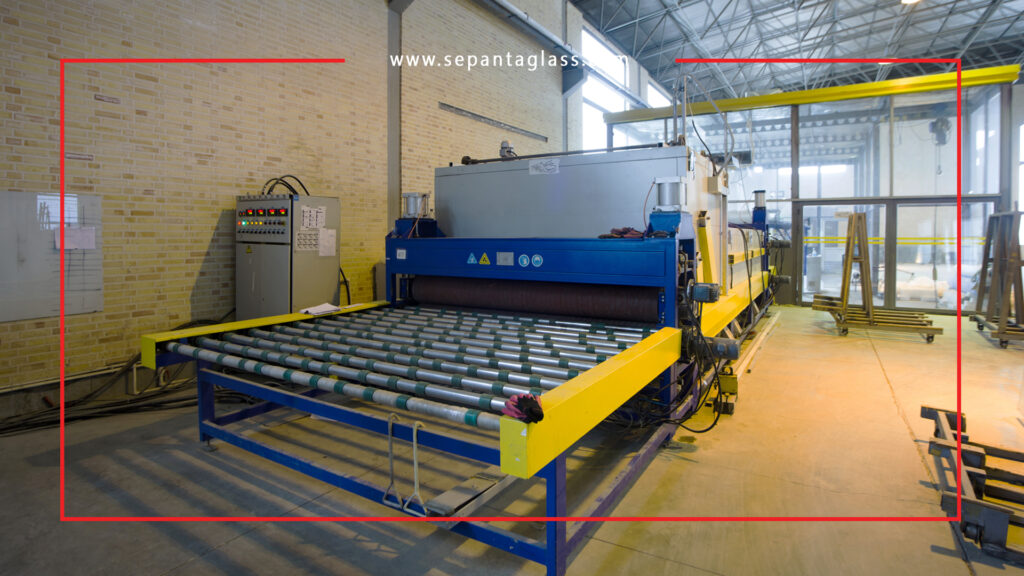
Laminating furnace
Autoclave
The final process for producing laminated glass is the autoclave.
After leaving the laminating furnace, the laminated glass is opaque and the glasses can be separated from each other. To fix the film between the glass and make it transparent, the laminated glass is placed inside the autoclave for 5 hours. The laminated glasses inside the autoclave are fixed at a temperature of 150 degrees Celsius and 12 bar air pressure. After the furnace cycle is complete, the glasses will be bubble-free and completely transparent and ready for delivery.
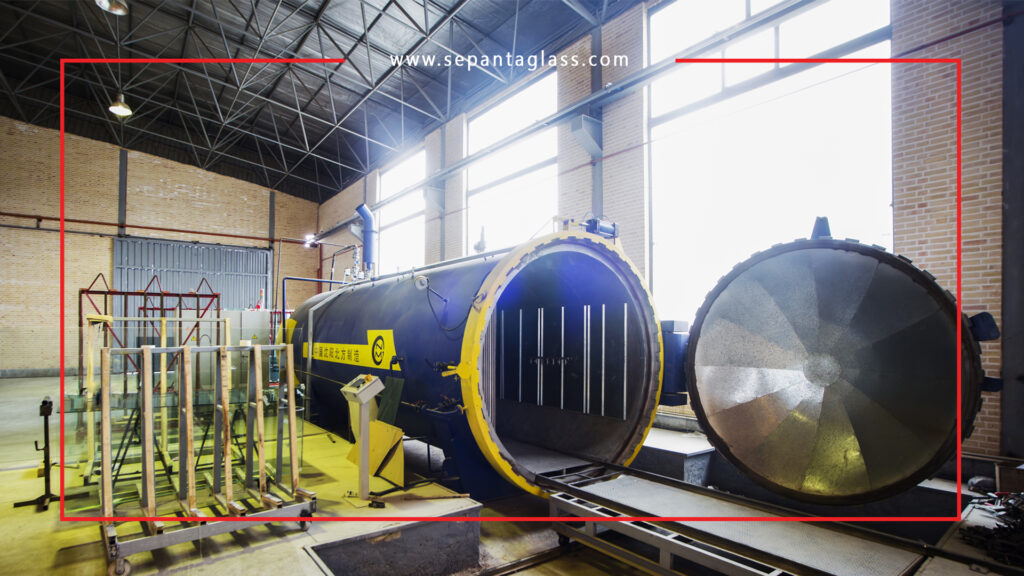
Autoclave oven
Conclusion
Sepanta Glass, as a producer of laminated glass, bulletproof glass, double-glazed glass, and spandrel glass, hopes that you have found this information useful and have become familiar with the manufacturing process of laminated glass and its related machinery.
We would be happy to hear your comments and suggestions.
